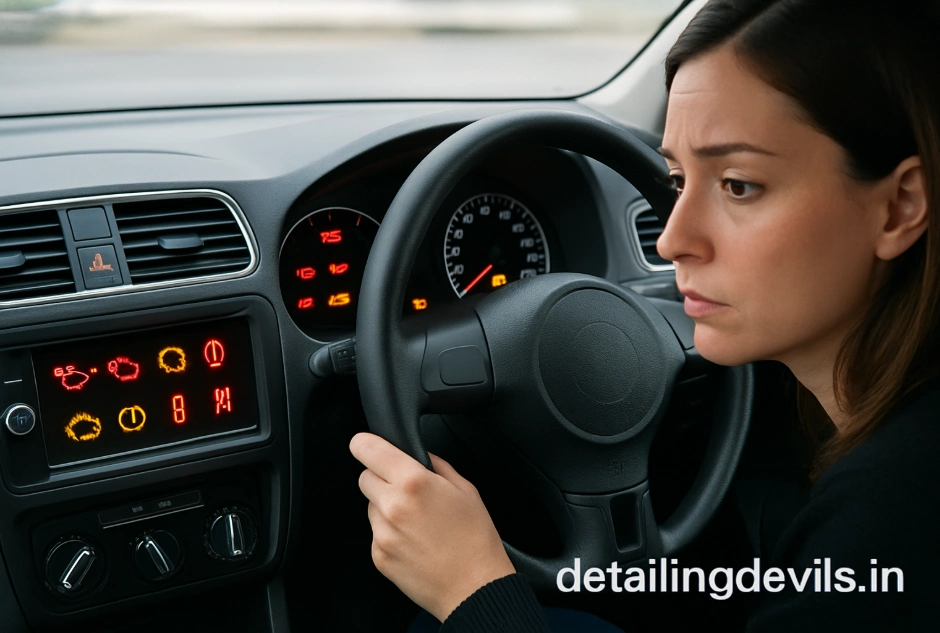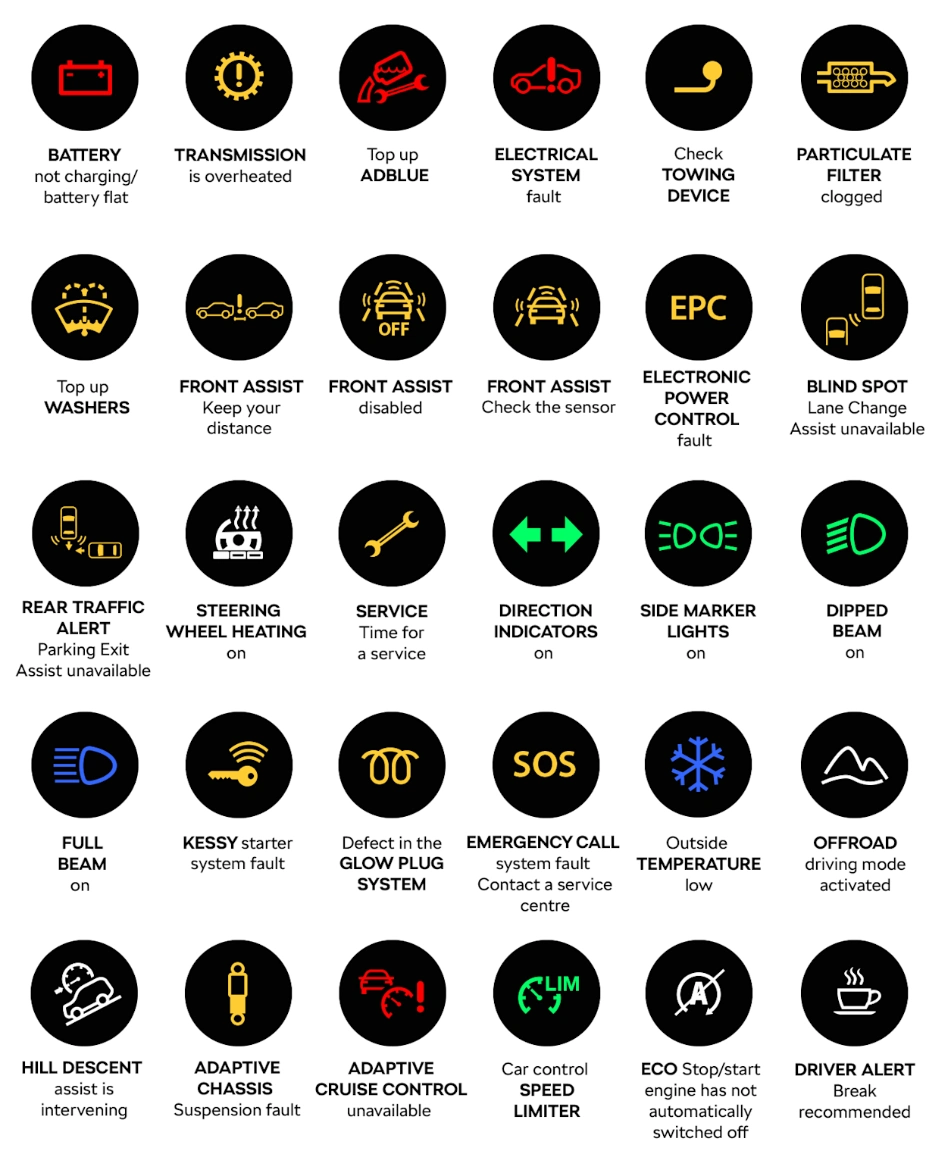Decoding Dashboard Warning Lights: Driver’s Essential Guide
When you're driving, your car’s dashboard is like a silent communicator, flashing lights to alert you about its health and performance. Those glowing symbols—red, yellow, or green—can be confusing, intimidating, or even ignored by many drivers. However, understanding these dashboard warning lights is crucial for your safety, your vehicle’s longevity, and avoiding costly repairs. At DetailingDevils.com, we’re passionate about keeping your car in top shape, inside and out. This comprehensive guide will decode the most common dashboard warning lights, explain their meanings, and provide actionable steps to keep you safe on the road.

Why Dashboard Warning Lights Matter
Your car's dashboard warning lights are its way of speaking to you. They signal everything from minor maintenance reminders to critical issues that demand immediate attention. Ignoring these lights can lead to breakdowns, expensive repairs, or even accidents. By understanding what each light means, you can take proactive steps to address issues before they escalate.
Dashboard lights are typically color-coded:
- Red: Critical issue requiring immediate attention.
- Yellow/Amber: Advisory warning; address soon but not an emergency.
- Green/Blue: Informational, indicating a system is active or functioning.
Let's dive into the most common warning lights, their meanings, and what you should do when they appear.
Common Dashboard Warning Lights and Their Meanings
1. Check Engine Light (Yellow/Amber Engine Symbol)
The check engine light is one of the most dreaded symbols. It looks like an engine outline or sometimes includes the word "CHECK." This light can indicate issues ranging from a loose gas cap to serious engine problems.
- Possible Causes: Faulty oxygen sensor, failing catalytic converter, loose gas cap, or ignition issues.
- What to Do: Tighten or replace the gas cap first. If the light persists, use an OBD-II scanner to diagnose the issue or visit a mechanic. Don't ignore it, as prolonged driving can damage the engine.
- Urgency: Moderate. Address within a few days unless the light is flashing, which indicates a severe issue requiring immediate attention.
2. Battery Warning Light (Red Battery Symbol)
This light, shaped like a battery, signals an issue with your car's charging system.
- Possible Causes: Failing battery, alternator issues, or loose/damaged battery cables.
- What to Do: Turn off non-essential electronics (e.g., AC, radio) to reduce strain. Have the battery and alternator tested at an auto shop. A failing battery may leave you stranded.
- Urgency: High. Address immediately to avoid a dead battery.
3. Oil Pressure Warning Light (Red Oil Can Symbol)
A red oil can or "OIL" light indicates low oil pressure, which can harm your engine.
- Possible Causes: Low oil levels, oil pump failure, or leaks.
- What to Do: Check oil levels using the dipstick and top up if needed. If the light persists, stop driving and consult a mechanic to prevent engine damage.
- Urgency: Critical. Pull over safely and address immediately.

4. Brake System Warning Light (Red Circle with Exclamation Mark)
This light, often a red circle with "!" or "BRAKE," signals an issue with your braking system.
- Possible Causes: Low brake fluid, worn brake pads, or a parking brake left engaged.
- What to Do: Check if the parking brake is on. If not, inspect brake fluid levels. If the light stays on, visit a mechanic, as brake issues compromise safety.
- Urgency: Critical. Do not drive until resolved.
5. ABS Warning Light (Yellow "ABS" Symbol)
The Anti-lock Braking System (ABS) light indicates a problem with the system that prevents wheel lockup during sudden braking.
- Possible Causes: Faulty wheel speed sensors, ABS module issues, or low brake fluid.
- What to Do: Standard brakes may still work, but ABS functionality is compromised. Have it checked by a professional.
- Urgency: Moderate. Address soon, especially if driving in slippery conditions.
6. Tire Pressure Monitoring System (TPMS) Light (Yellow Exclamation Mark in Tire Shape)
This light, shaped like a tire with an exclamation mark, alerts you to low tire pressure.
- Possible Causes: Underinflated tires, a slow leak, or a faulty TPMS sensor.
- What to Do: Check tire pressure with a gauge and inflate to the recommended PSI (found on the driver's door jamb or manual). If the light persists, inspect for punctures or sensor issues.
- Urgency: Moderate. Address promptly to avoid tire damage or blowouts.
7. Coolant Temperature Warning Light (Red Thermometer or Waves)
This light, often a thermometer or wavy lines, indicates the engine is overheating or coolant levels are low.
- Possible Causes: Low coolant, radiator issues, or a failing thermostat.
- What to Do: Pull over safely, let the engine cool, and check coolant levels. Add coolant if needed, but don't open the radiator cap when hot. Seek professional help if the issue persists.
- Urgency: Critical. Stop driving immediately to prevent engine damage.
8. Airbag Warning Light (Red Airbag Symbol or Person with Circle)
This light indicates a problem with the airbag system, which could affect its deployment in a crash.
- Possible Causes: Faulty sensors, wiring issues, or a malfunctioning airbag module.
- What to Do: Have the system inspected by a professional. Airbags are critical for safety.
- Urgency: High. Address as soon as possible.
9. Traction Control Light (Yellow Car with Skid Marks)
This light, often a car with wavy lines, indicates the traction control system is active or malfunctioning.
- Possible Causes: System activation due to slippery roads or a malfunction in the system.
- What to Do: If it blinks during driving, it's likely working to stabilize the car. If it stays on, have it checked by a mechanic.
- Urgency: Low to moderate. Address if it remains on.
10. Green/Blue Lights: Informational Indicators
Green or blue lights, like high beam indicators (blue headlight symbol) or cruise control (green speedometer), show that a system is active. These are not warnings but confirmations that features like headlights or turn signals are on.
- What to Do: No action needed unless a feature is unintentionally active (e.g., high beams blinding others).
- Urgency: None.
What to Do When a Warning Light Appears
Seeing a dashboard warning light can be unsettling, but staying calm and methodical is key. Follow these steps:
- Assess the Color and Urgency:
- Red lights demand immediate action. Pull over safely and address the issue.
- Yellow lights suggest a problem to fix soon.
- Green/blue lights are informational and usually require no action.
- Consult Your Owner's Manual: Your car's manual lists specific warning lights and their meanings. Keep a digital or physical copy handy.
- Perform Basic Checks: For issues like low oil, coolant, or tire pressure, check levels yourself if safe. Avoid opening hot engine components.
- Limit Driving: For critical warnings (e.g., oil pressure, coolant), avoid driving to prevent damage. For yellow lights, drive cautiously to a mechanic.
- Seek Professional Help: If you can't resolve the issue, visit a trusted mechanic or service center. At DetailingDevils.com, we recommend regular maintenance to prevent warning lights from appearing.
Preventing Dashboard Warning Lights
Prevention is better than reaction. Here's how to minimize the chances of warning lights:
- Regular Maintenance: Follow your car's maintenance schedule for oil changes, tire rotations, and fluid checks.
- Quality Detailing: At DetailingDevils.com, we emphasize exterior and interior care to complement mechanical maintenance, ensuring your car looks and runs great.
- Monitor Fluids: Check oil, coolant, brake fluid, and windshield washer fluid regularly.
- Tire Care: Maintain proper tire pressure and inspect for wear or damage.
- Battery Health: Test your battery annually, especially in extreme weather.
- Drive Smart: Avoid aggressive driving, which can strain systems like brakes and the engine.
Safety Tips for Dealing with Warning Lights
- Stay Calm: Panicking can lead to poor decisions. Assess the situation calmly.
- Pull Over Safely: If a red light appears, find a safe spot to stop, away from traffic.
- Use Hazard Lights: If stopped on the road, turn on hazard lights to alert other drivers.
- Carry Basic Tools: Keep a tire gauge, flashlight, and basic toolkit in your car for quick checks.
- Know a Trusted Mechanic: Have contact details for a reliable service center or roadside assistance.
Conclusion
Dashboard warning lights are your car’s way of asking for help. By understanding their meanings and acting promptly, you can keep your vehicle running smoothly and safely. Whether it’s a red light signaling an emergency or a yellow light prompting a check-up, knowledge is your best tool. At DetailingDevils.com, we’re committed to helping you maintain your car’s beauty and performance. Regular detailing, combined with proactive maintenance, ensures your car stays in top condition, inside and out. Next time a warning light pops up, you’ll know exactly what to do.
Visit DetailingDevils.com for expert car care tips and premium detailing services to keep your ride shining!
For more information, please contact us at +91 9555695695 or send us an email at care@detailingdevils.com - premium car coating, Car Coating, Car detailing, Ceramic coating, bike detailing, Nano Ceramic Coating, Car Detailing Franchise opportunity.
FAQs About Dashboard Warning Lights
It depends on the light. Red lights (e.g., oil pressure, brake system) require immediate attention, and driving may be unsafe. Yellow lights (e.g., check engine) allow cautious driving to a mechanic, but don't delay. Always prioritize safety.
An intermittent check engine light could indicate a loose gas cap, minor sensor issues, or intermittent faults. Use an OBD-II scanner to retrieve error codes and consult a mechanic.
Some lights, like TPMS, reset after fixing the issue (e.g., inflating tires). Others, like the check engine light, may require an OBD-II scanner to clear codes. Always address the underlying issue before resetting.
While many symbols are universal (e.g., check engine, battery), some vary by manufacturer. Always check your owner's manual for specifics.
At DetailingDevils.com, we offer premium detailing services to keep your car's exterior and interior pristine. While we focus on aesthetics, a clean car complements regular mechanical maintenance, helping you spot issues like leaks or tire wear early.
See Also :
- The Ultimate Guide to Dragon PPF
- Things You Must Know While Buying Ceramic Coatings
- Top 13 Car Detailing Franchise in India
- Teflon vs Ceramic Coatings: Which one is better?
- The Pros and Cons of Ceramic Coating a Car
- Car Coating & Nano Ceramic Coating Services
- Best Bike and Car Detailing Service in Delhi NCR, India
- Ceramic Coating Maintenance Tips
- Ceramic Coating Service: Revolutionizing Vehicle Care
- Can you apply Ceramic coating over paint protection film?
- The Beginner’s Guide To Professional Car Detailing: What You Should Know

